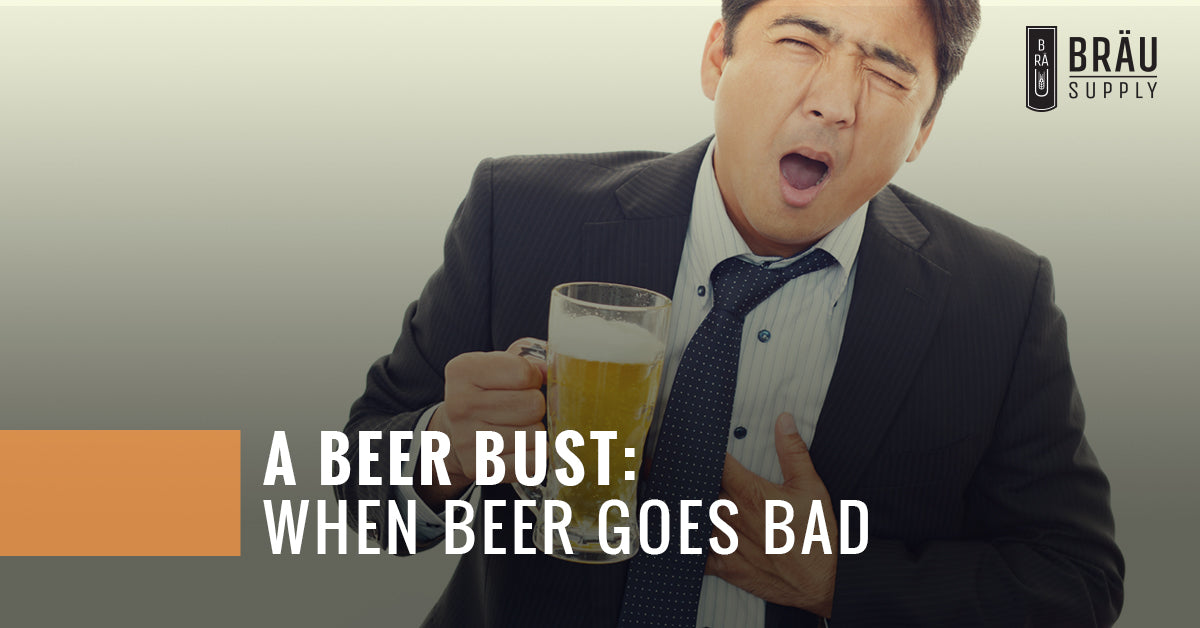Boxing weekend sale! Save up to $700! Shop now Our products ship tariff free

A Beer Bust: When Beer Goes Bad
June 15, 2018 3 min read

It’s happened to all of us. You open our fridge and tucked back in a dusty corner is a bottle of homebrew you made in the past using your small batch brewing system. You’re not sure when you made it, or even what it is, but maybe you’re out of that latest batch of the IPA you made, or you’re just trying to clear out the fridge, so you grab that bottle, pop the lid, and pour it into the glass. You’re treated to a funky aroma, and a kind of stale taste. Bummer, the beer’s gone bad. But why? Beer can go bad for a variety of reasons, so join Bräu Supply as we look at a few reasons.
Check The Best Before Date
For beer you bought at the store or brought home from the brewery, this is easy. Check the package and ensure that you enjoy your tasty brew before then. For homebrewers, this is a little harder. Typically, you can sort of estimate how long your beer’s shelf life will be by the type of beer it is.- Lighter beers, like lagers, pilsners, wheats, and fresh hop IPAs — three to six months
- Stronger ales, single and double IPAs — six to nine months
- Belgian beers, higher ABV beers, or stouts and porters — nine months or longer
It’s A Trick Of The Light
Light is one of the great enemies of beer. Sure, good lighting can make any beer look great, but it might not make it taste that way. Whether you get your beer from the store or from your small batch brewing system, you’ll want to ensure that your beer doesn’t get any undue exposure to light. If you aren’t storing your beer in your fridge, store it in a dark place like a closet or cabinet. The UV radiation from light helps to speed up the breakdown of the alpha acids in the hops, which creates a skunky taste. To best keep light out of your beer, you can be careful in what packaging you use. Cans are best, brown glass bottles are okay, but green and clear glass bottles should be avoided.
Check The Temperature
The temperature at which you store your beer can also impact how it tastes. Some beers need to be stored at cooler temperatures, while others can be a little warmer.- Lighter beers (lagers, wheats, fresh hop IPAs) — 45° - 50° F
- Darker beers (think ambers, stouts, IPAs) — 50° - 55° F
- Dark beers and strong beers (barleywines, trippels, old ales) — 55° - 60° F
In Summary
So, we’ve learned that the lifespan of the beer, the amount of light it gets, and the temperature at which it’s stored can make an impact on the taste of your beer. To ensure that you enjoy every sip of your homebrew beer, you’ll want to keep it stored in a cool, dark place, and drink it fairly soon after your brew it. To heighten your beer drinking experience, we suggest that you always pour your beer into a clean glass.
Of course, you can also improve your beer brewing game by using the UniBräu all-in-one beer brewing system from Bräu Supply. Order yours now!
More articles how to brew beer
The ultimate guide to Kveik yeast: Unleashing it's fermentation potential
Revolutionizing home brewing: The simplified art of no sparge brewing
Exploring amber ales: A guide with a twist on the traditional recipe
Mastering cold crashing: Enhancing beer clarity and accelerating the aging process
What is the basic function of the fermenter?
What causes a fermenter to heat up?
The art of lagering: A guide to perfecting the cold conditioning process
Troubleshooting fermentation problems in brewing: A comprehensive guide
Subscribe
Sign up to get the latest on sales, new releases and more …


